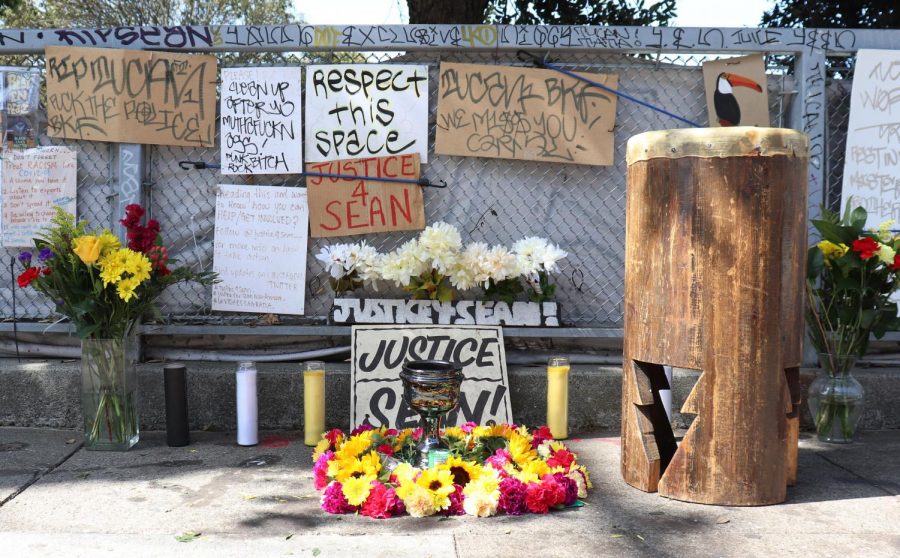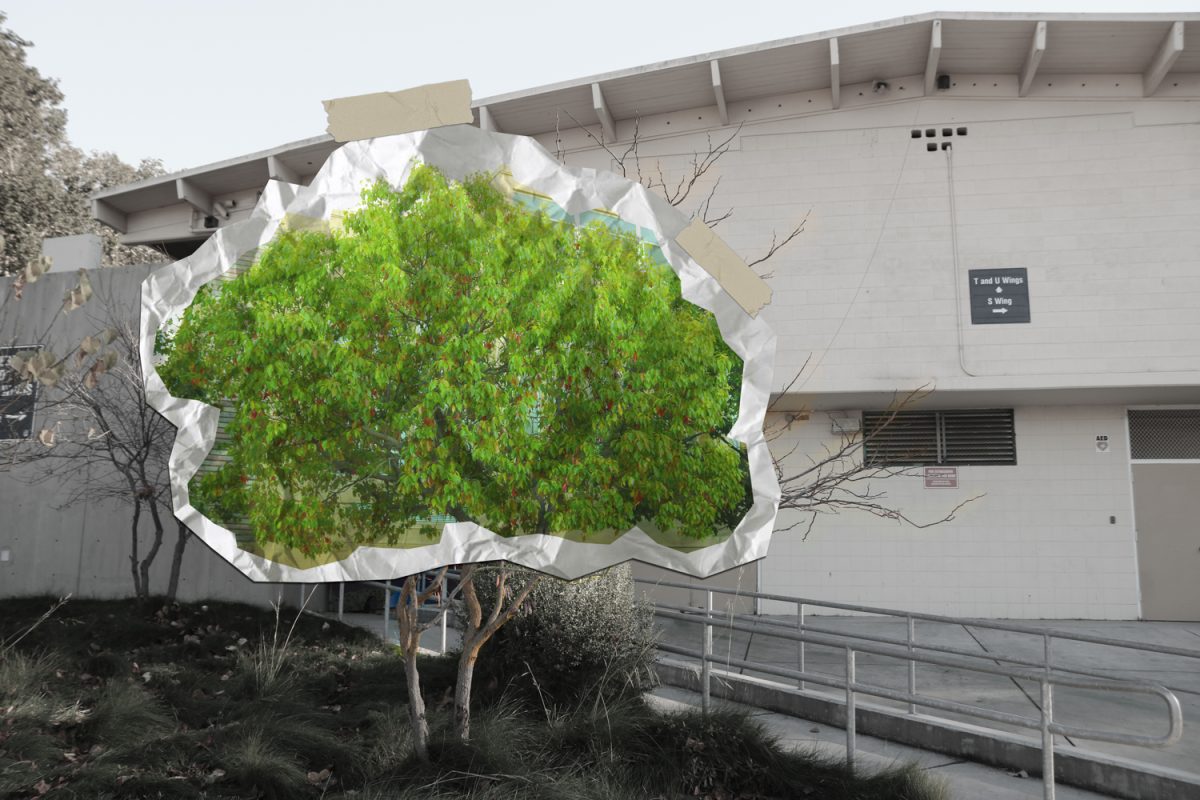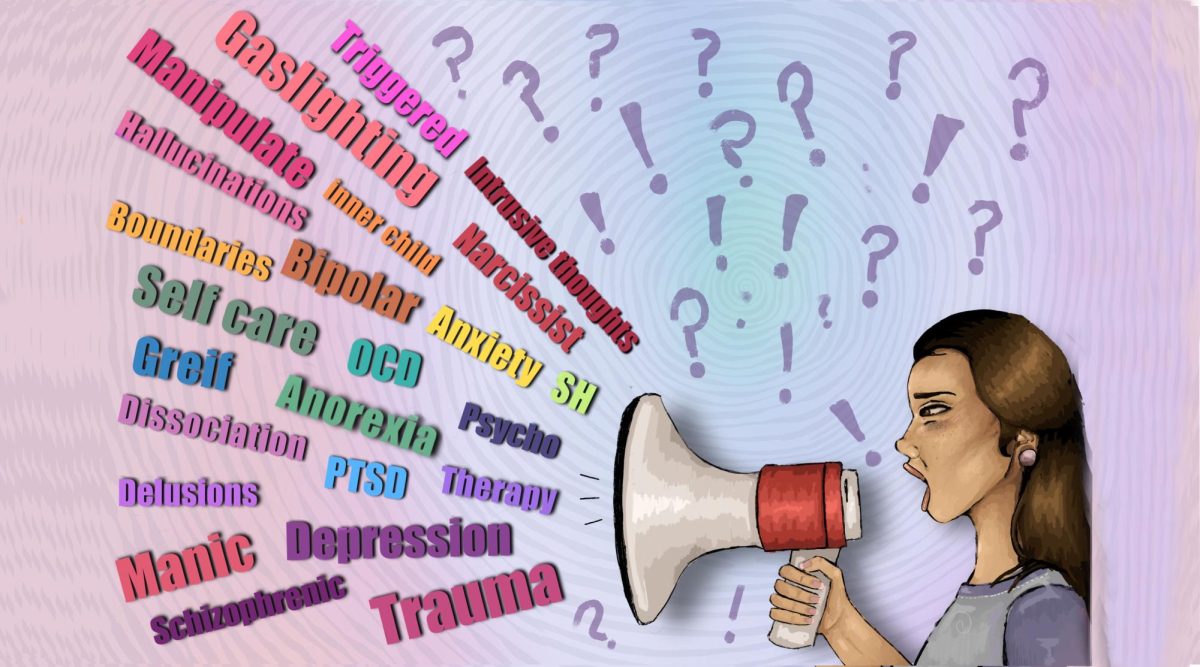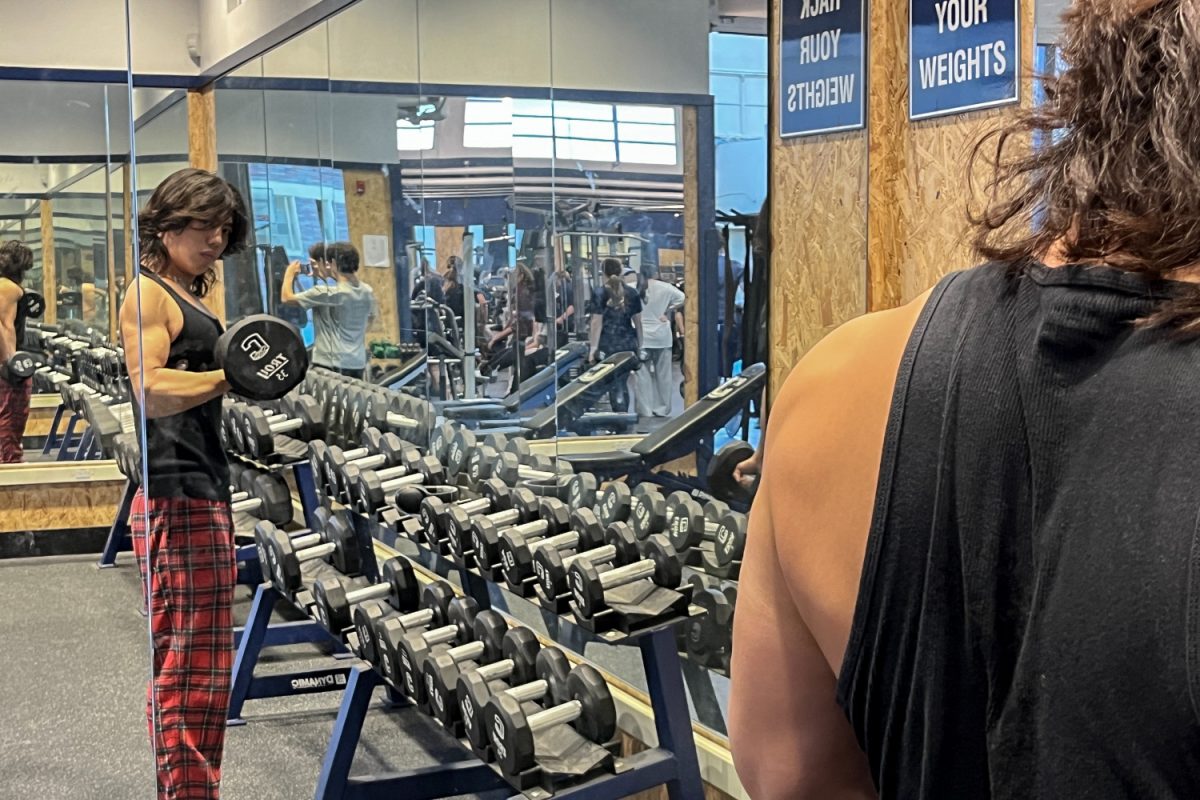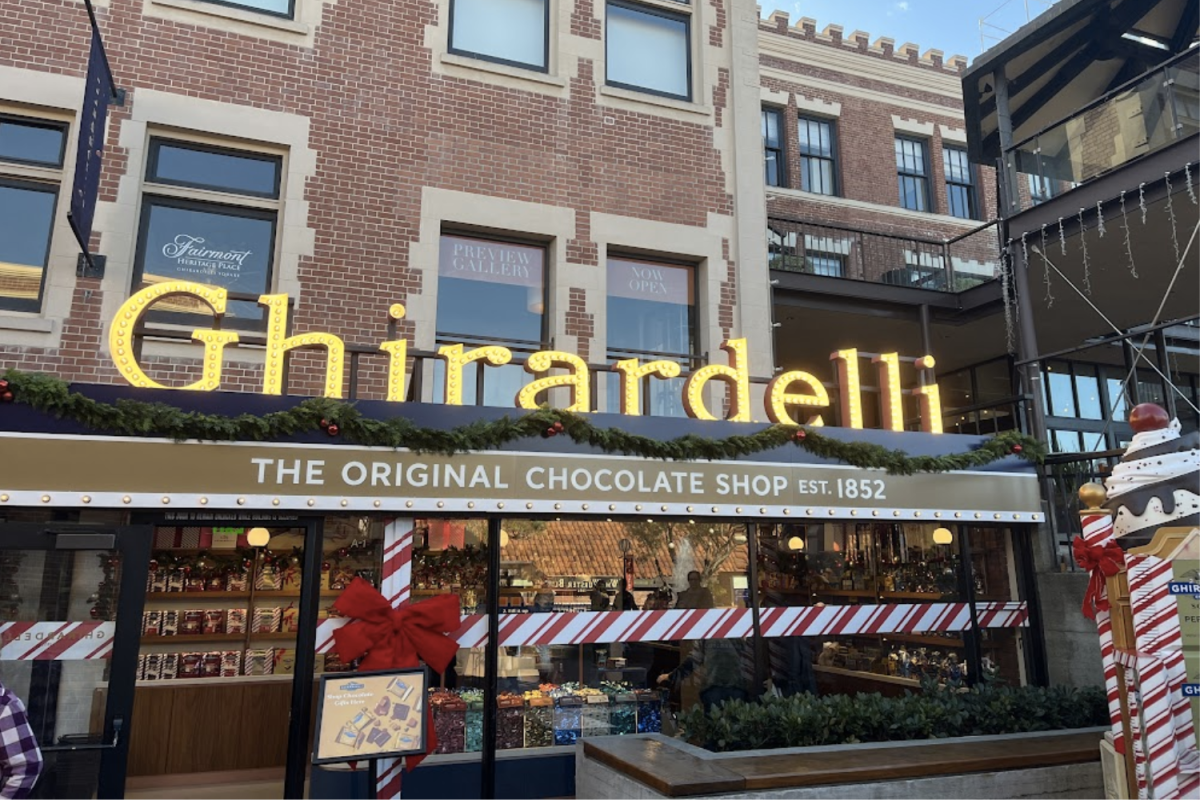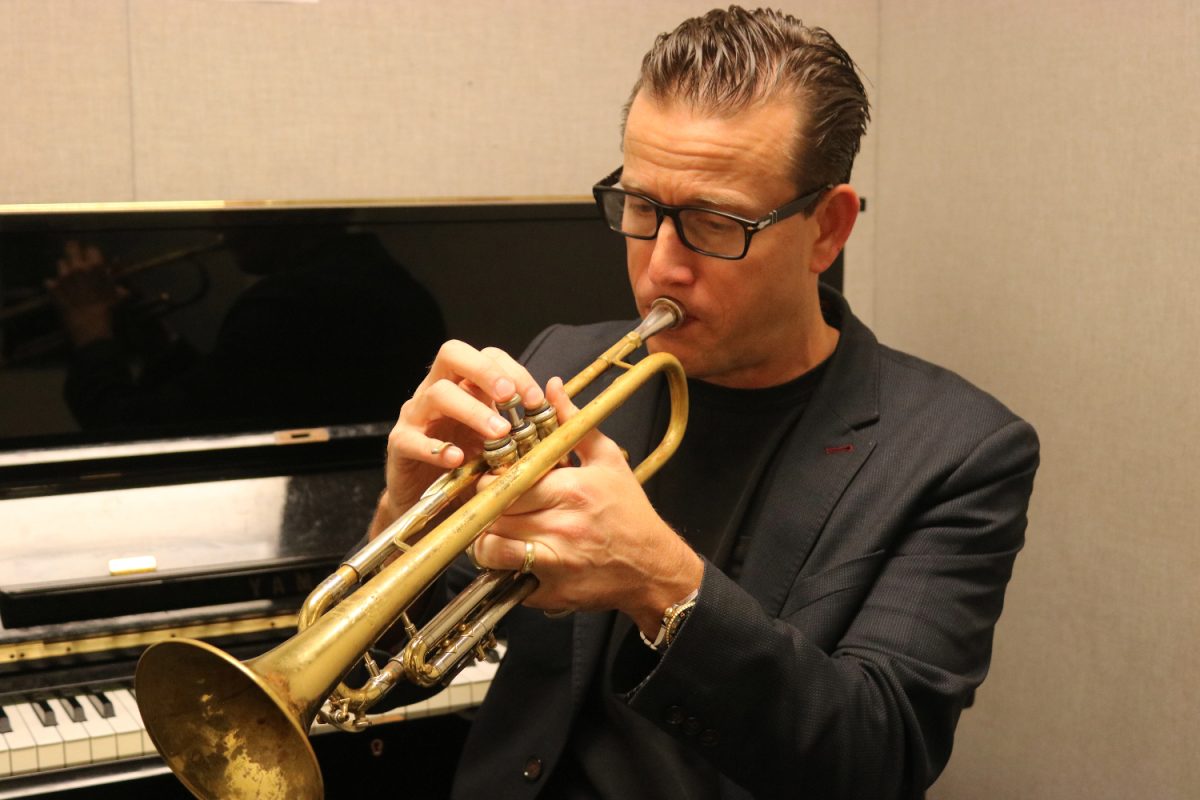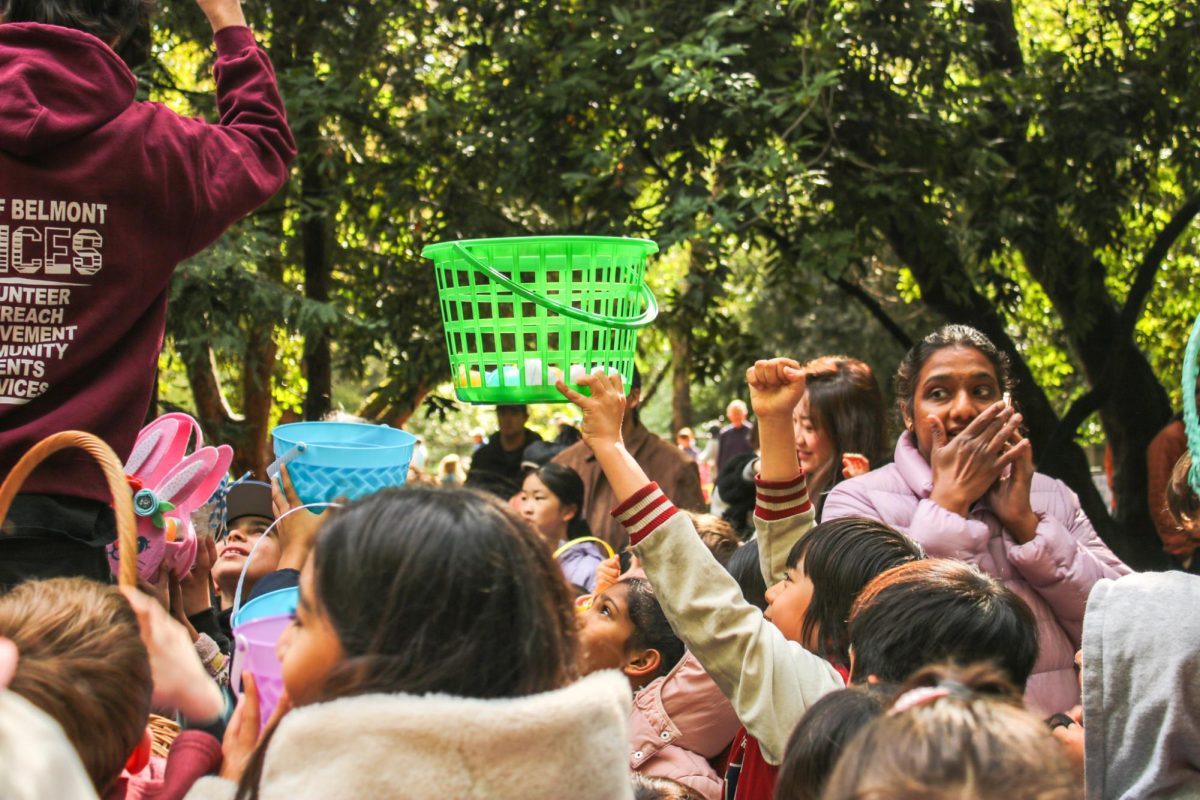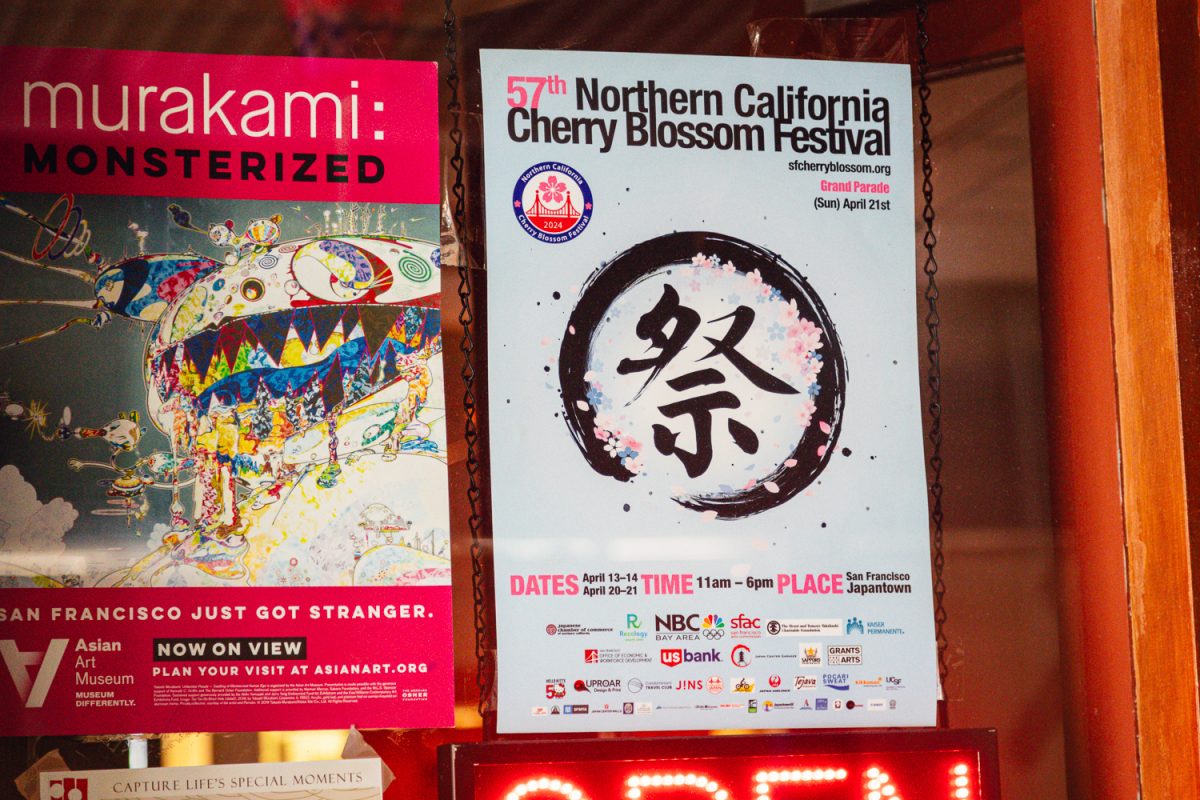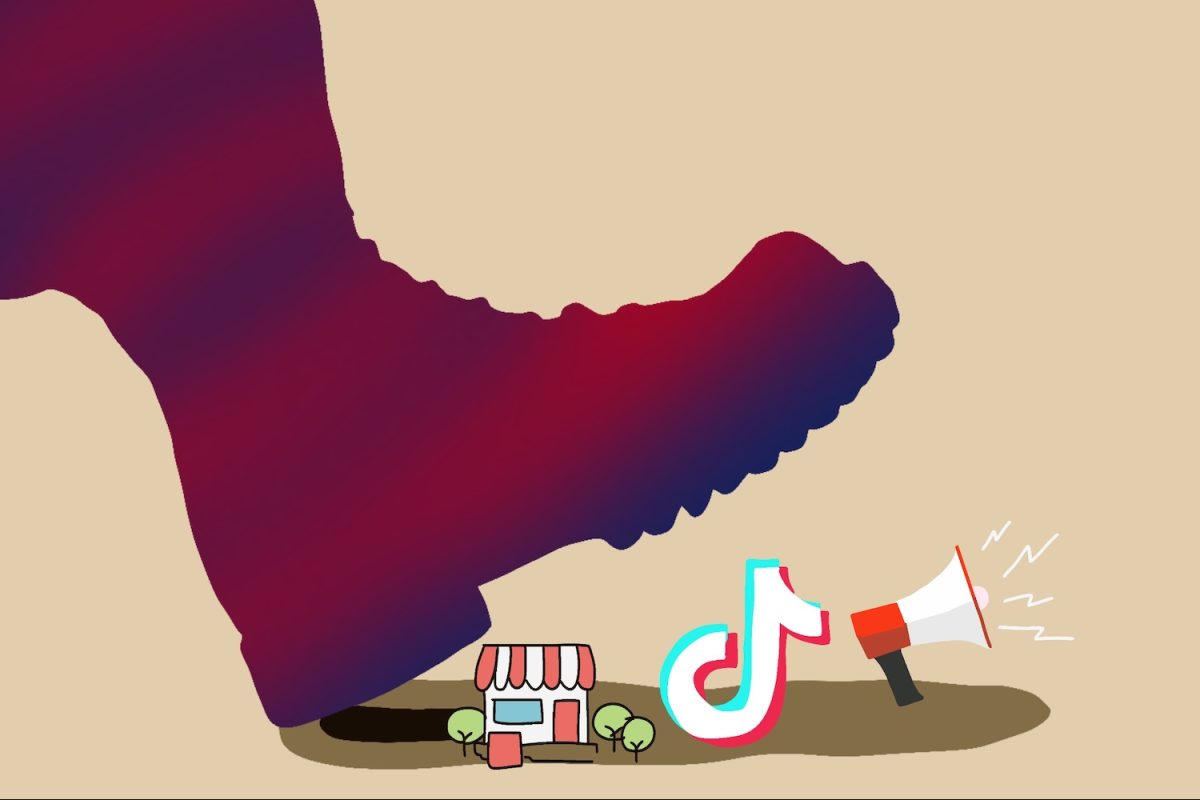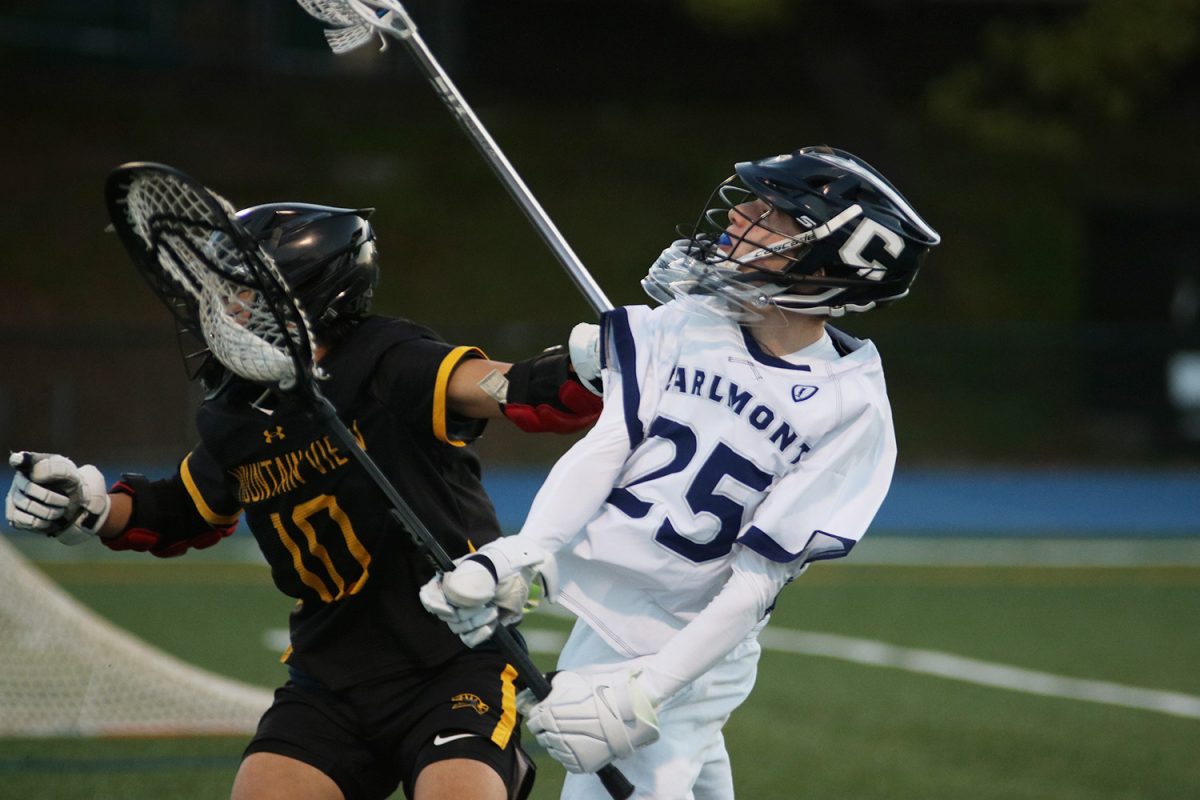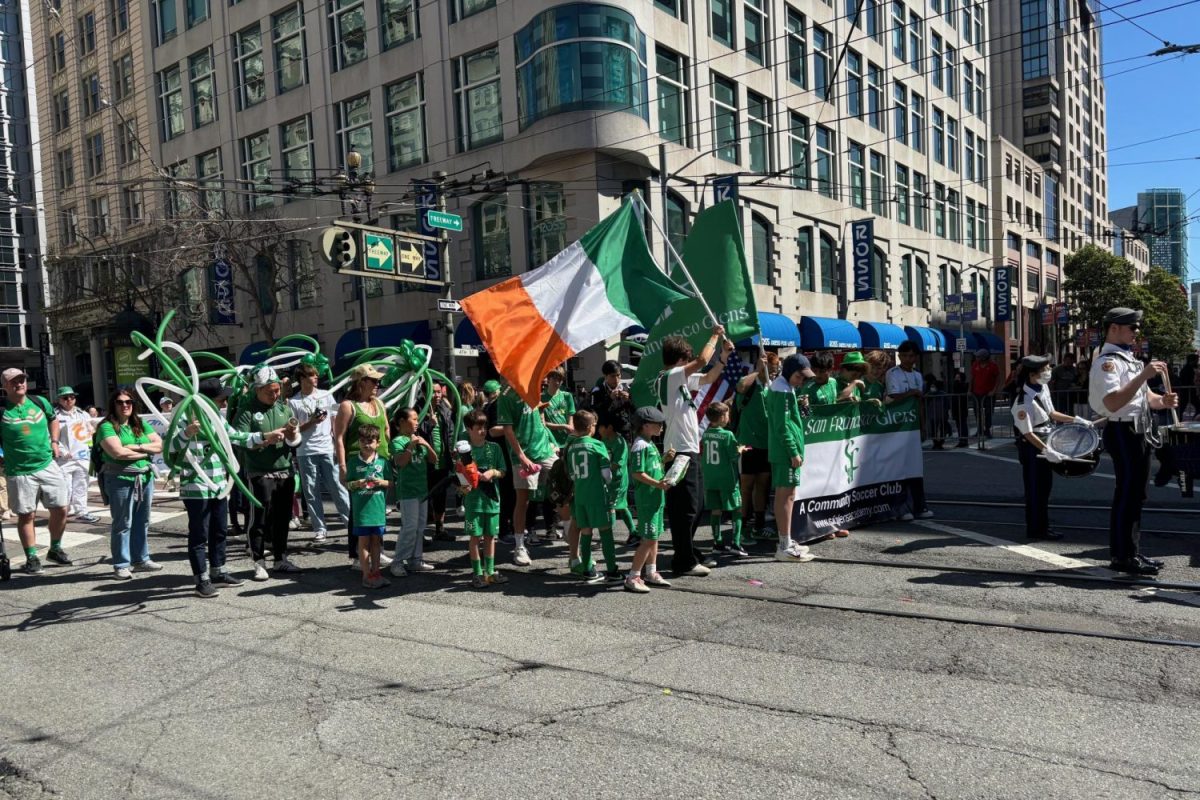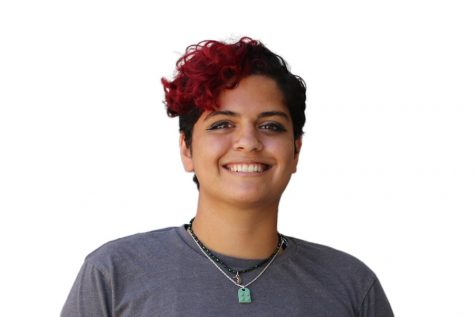During protests between May and August of this year, a common chant was a call and response asking protesters to shout the names of George Floyd and Breonna Taylor.
Taylor was an emergency medical technician in Kentucky who was shot in her apartment in March by Louisville Police Detective Brett Hankison. After her death, Louisville passed a ban called “Breonna’s Law,” banning no-knock search warrants. On May 25, Floyd was killed by police officer Derek Chauvin, sparking Black Lives Matter protests across the U.S.
The outrage surrounding Floyd’s death quickly spread across social media platforms. On May 26, the day after Floyd was killed, protests broke out in Minneapolis, Floyd’s hometown. Protesters used the slogan “Black Lives Matter,” which was coined in 2013 by the Black Lives Matter organization, a movement that originally started as a response to the death of Trayvon Martin, a 17-year-old Black teen. Martin’s shooter, George Zimmerman, was acquitted from jail time, pushing Alicia Garza, Patrisse Cullors, and Opal Tometi to start the Black Lives Matter organization.
The organization came with the birth of the hashtag #BlackLivesMatter. The hashtag’s use on Twitter increased around significant events for the movement, such as failing to punish the police officers involved in the death of Eric Garner and Bernie Sanders’s public support of the movement in 2015. The use of the hashtag increased after Floyd’s death, too.
Social media and news did not largely cover Taylor’s death immediately. Instead, her death was covered after the outrage surrounding Floyd’s death. Taylor was killed on March 13, but many people did not begin protesting her death until May. According to the Washington Post, protesters began taking more extreme approaches to Taylor’s death in August, almost five months after her death.
Protests sparked by Taylor and Floyd’s deaths and the modern Black Lives Matter movement focus on restructuring broad parts of society rather than specific laws. One part of this is a call toward defunding police, an action that proposes cutting or lowering police funding and gaining justice for the Black people who have been unfairly searched, arrested, or killed by police officers. In an interview with the New Yorker, Tometi explained that defunding police would lead toward more community funding, such as financing social workers, improving the education system, and paying teachers more.
“I support defunding the police, though personally I believe in full abolishment of it and instead funding [things] like education and reducing poverty, and defunding the police is a step in that direction,” said Daphne Krayn, a junior.
The idea of defunding police also comes from the widespread belief that both the police and the American justice system were built when racism was rampant. People also believe that the police’s role in other countries and continents is built off of racism.
“The popes signed papal bulls in the 1500s that basically said ‘We bless your enslavement and subjugation of these people,’” said Professor Frederick Gaines, the chair of ethnic studies at the College of San Mateo (CSM).
Gaines teaches an African American history and culture class at CSM. He believes that movements like Black Lives Matter will make significant progress as long as there is always a movement present and African American children learn in Afrocentric environments.
“What I mean by Afrocentric is that it is centered in Africa. When you teach math, you teach math from the African center. You first teach them that Black people were the first to do math,” Gaines said.
It is essential to the Black Lives Matter movement and other similar movements, Gaines believes, that society is able to deconstruct the Eurocentric notion that Black people cannot study math or science.
He also believes that Black people have to create their own economy within the American economy by creating jobs for themselves and building strong Black communities to gain progress.
Regarding the recent protests, Gaines recognizes that protesters have learned from past mass movements.
In contrast to the civil rights movement, both the Black Lives Matter organization and local community members have been organizing protests across the U.S. Gaines also stated that compared to past movements like the civil rights movement and the Black Panthers, the 2020 protests are much more intense and include a larger number and broader diversity of people. This larger, more intense movement may also be a factor in the change in leadership. Instead of having one central leader, people are coming together and leading as a group.
While there has been an increase in diversity, Gaines expressed a fear that white people would stop supporting the movement as a result of the media’s portrayal of the movement.
“I think [Black Lives Matter] has been characterized by the outside, by the media, as an outlier, radical group,” Gaines said.
However, he noted that recently, Black Lives Matter has been seen as a positive movement outside of the press. With this portrayal in the media came widespread protests across the U.S., including in San Mateo County.
Protests in San Mateo were able to gain enough traction that the City Council proposed a Black Lives Matter Resolution. The resolution is an official statement claiming that Black Lives Matter and community organizations will work together to “address the root causes of racial inequity in our community.” Rory McMilton, the president of San Mateo Police Officers’ Association, said that the action of the City Council to ask community organizations to sign the resolution brought more power to it.
“If you get a lot of community organizations involved that you wouldn’t think would traditionally sign on to that sort of thing, I think the resolution has a more powerful meaning,” McMilton said.
McMilton recognized the resolution’s necessity, mentioning that public faith in the police has eroded since Floyd’s death. He stated that it is essential that the community has trust in the Police Department, as they rely on people calling in to help the community.
“When things like George Floyd happen, we go out of our way to reinforce that relationship with the community,” McMilton said.
While some people support rebuilding relationships with police, others oppose it. Jaya Vela, a junior at Carlmont and a protest organizer for a protest in San Mateo, said that protesters worked with San Mateo police in the past.
“There was a protest in San Mateo, I believe, but what we found was a problem was the person who organized the San Mateo one was partnering up with the police, and the whole purpose of the protests was to go against the police,” Vela said.
Though the San Mateo community is mainly supportive of Black Lives Matter, that is not the case in many parts of the U.S. Still, support is slowly growing. In two different studies done by Pew Research Center, one in 2016 and one in 2020, surveys show that in 2020, support for Black Lives Matter increased among both Black and white Americans.
Contrasting the rest of the U.S., California has been regarded as liberal. Even at Carlmont, it is clear that liberal ideals are heavily represented, including support for Black Lives Matter. In an informal survey of Carlmont students, 86% of respondents marked that they support Black Lives Matter, 11.6% saying they are unsure, and 2.3% saying they do not support the movement.
Vela also recounts around 50 people showing up to her protest. Vela’s protest was on the smaller side compared to protests in larger areas. Videos and photos on social media and mainstream media have shown hundreds of people showing up to demonstrations in cities like New York. Tometi believes that in the times of COVID-19, people have more time on their hands to go to protests and that they are willing to risk their lives during the pandemic for the Black Lives Matter cause.
Despite mass support for #BlackLivesMatter, the presence of counter-protesters using the hashtag #AllLivesMatter has also grown since the death of Floyd. All Lives Matter individuals claim that those supporting the Black Lives Matter movement do not have regard for other races. According to Pew Research Center, from July 2013 to March 2016 #BlackLivesMatter was used eight times as many as #AllLivesMatter.
Krayn, Vela’s co-organizer for their San Mateo protest, believes All Lives Matter is not a valid argument, as protesters and advocates for Black Lives Matter never said that other races do not suffer. She stated that Black Lives Matter is becoming mainstream because Black Americans are currently being targeted the most.
“All sorts of races do suffer. The Black Lives Matter movement never said that other races don’t suffer. Latino people suffer similarly high rates of incarceration, but the Black community is specifically targeted and has much higher rates of mortality and oppression,” Krayn said.
The oppression of Black people could possibly also factor in America’s Eurocentric education. As Gaines emphasized, learning about and understanding African American history is vital for the movement’s success.
I wish people didn’t condemn rioters. People aren’t rioting for no reason, it sends a message.
— Daphne Krayn
Carlmont supports this with their ethnic studies class, which is taught by Karen Ramroth. Ramroth explained that the course helps people understand their own identities and the identity of others, helping to break down barriers. She also said that the class also allows students to understand how power dynamics affect societal institutions.
“Ethnic studies gives us a more complete picture of American history by filling in missing information or misinformation and helping us see historical throughlines and patterns in our social systems,” Ramroth said.
The course lets students identify and challenge racial inequality, as well as find ways to fix them.
“We look to history to explain the wealth gap’s origins in historic policies like redlining, restrictive housing covenants, discriminatory lending, blockbusting, and gentrification,” Ramroth said.
Ramroth believes that the class has helped create change at Carlmont. The course also helps make students aware of racial injustices in both the past and present, as well as how those injustices affect the future. This leads the students to understand how to approach movements like Black Lives Matter. On Oct. 14, the School Board will decide on making the course required for all students.“Once students understand the history behind these inequities, they can start to challenge and deconstruct it,” Ramroth said.


